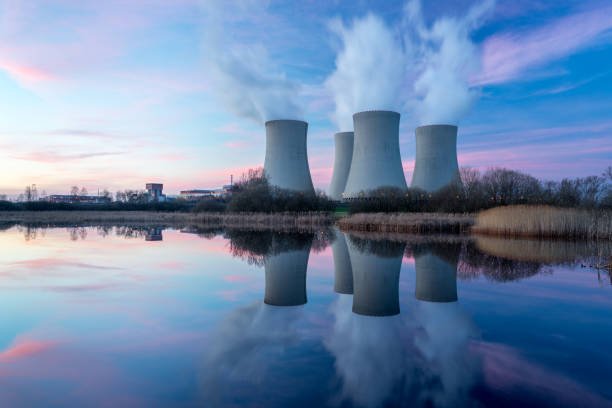On this page, we explore the 10 disadvantages of nuclear energy
Nuclear energy is often touted for its efficiency and ability to generate large amounts of power without emitting greenhouse gases. However, it also comes with significant drawbacks that can have serious implications for both the environment and society. Understanding these disadvantages is essential, particularly in a South African context where energy supply and environmental concerns are crucial matters.
What are 10 Disadvantages of Nuclear Energy
10 Disadvantages of Nuclear Energy are:
- Radioactive Waste Production
- High Initial Costs
- Potential for Catastrophic Accidents
- Security Risks
- Limited Fuel Recycling
- Dependence on Water Resources
- Thermal Pollution
- Long Decommissioning Process
- Uncertain Public Perception
- Potential Impact on Renewable Energy Development
1. Radioactive Waste Production
Nuclear reactors produce long-lived radioactive waste that requires secure storage for thousands of years. Managing and disposing of this waste is highly complex and poses long-term environmental risks.
- Koeberg Nuclear Power Station: The only commercial nuclear energy facility in South Africa, handling radioactive waste.
- Vaalputs Radioactive Waste Disposal Facility: A national depository for low and intermediate-level radioactive waste.
- Pelindaba Nuclear Research Centre: Site for research-related radioactive waste, which requires extensive management.
2. High Initial Costs
Building nuclear power plants involves high capital investment in construction, technology, and safety measures. These costs can make nuclear energy less economically attractive compared to other energy sources.
- Koeberg Nuclear Power Station: Construction costs were significant, and ongoing maintenance continues to be expensive.
- Cancelled Nuclear Build Programme: A proposed plan for more reactors was abandoned due to high projected costs.
- Eskom’s Financial Challenges: National energy provider Eskom has faced financial constraints, making investments in nuclear energy challenging.
3. Potential for Catastrophic Accidents
Accidents at nuclear power plants, such as the Chernobyl disaster, can lead to massive releases of radiation. These accidents have long-lasting impacts on human health and the environment.
- Koeberg Safety Concerns: Concerns have been raised about safety regulations and the potential risk of accidents.
- Pelindaba Incident in 2009: An incident involving a leak of radioactive gases.
- Public Protests and Opposition: Ongoing public concern over the potential risks associated with nuclear energy.
4. Security Risks
Nuclear facilities can be targets for terrorist attacks or theft of nuclear materials. This raises significant security concerns and necessitates extensive measures to ensure safety.
- Pelindaba Security Breach in 2007: An armed attack highlighted security vulnerabilities at nuclear facilities.
- Transportation of Nuclear Materials: Concerns over the secure transportation of nuclear fuel and waste within the country.
- Regulatory Compliance: Ensuring all facilities meet international security standards has been an ongoing challenge.
5. Limited Fuel Recycling
Although nuclear fuel can be recycled, the process is complicated and expensive. Additionally, it can lead to the proliferation of nuclear weapons materials, presenting international security risks.
- Lack of Domestic Recycling Facilities: South Africa currently does not have extensive nuclear fuel recycling capabilities.
- Dependence on External Services: The need to send used fuel abroad for reprocessing.
- Proliferation Concerns: Balancing energy needs with international non-proliferation commitments.
6. Dependence on Water Resources
Nuclear power plants require large amounts of water for cooling. In regions with water scarcity, such as parts of South Africa, this can exacerbate existing water challenges.
- Koeberg’s Water Usage: The station requires significant water for cooling, affecting local resources.
- Proposed Nuclear Sites: Concerns over water use in regions already experiencing water scarcity.
- Competition with Other Needs: Balancing water requirements for energy production with agricultural and residential needs.
7. Thermal Pollution
The discharge of hot water from nuclear power plants into nearby water bodies can cause thermal pollution, negatively impacting aquatic ecosystems.
- Impact on Marine Life near Koeberg: Discharge of hot water affects local marine ecosystems.
- Regulatory Monitoring: Ensuring compliance with environmental regulations regarding thermal pollution.
- Potential Impact on Fishing Industry: Concerns over the long-term effects on local fishing due to thermal pollution.
8. Long Decommissioning Process
Dismantling a nuclear power plant is a lengthy and expensive process. It also generates additional radioactive waste, adding to the overall burden of waste management.
- Koeberg Decommissioning Plans: Complex planning required for future decommissioning.
- Financial Provisioning: Ensuring sufficient funds for safe decommissioning.
- Regulatory Oversight: Managing compliance with international standards for decommissioning.
9. Uncertain Public Perception
Public fear and opposition to nuclear energy can hinder its development and acceptance. Concerns about safety, waste disposal, and ethical considerations contribute to public resistance.
- Anti-Nuclear Protests: Various public protests against nuclear energy, particularly concerning new developments.
- Media Coverage: Often highlights risks and challenges associated with nuclear energy.
- Political Debate: Ongoing political discussions reflecting public uncertainty regarding nuclear energy’s role in the country.
10. Potential Impact on Renewable Energy Development
Investment in nuclear energy may divert resources from the development and implementation of renewable energy sources like solar and wind. This could slow the transition to a more sustainable energy future.
- Renewable Energy Independent Power Producer Procurement Programme (REIPPPP): Focus on renewables might be hindered by investment in nuclear.
- Wind and Solar Potential: Regions with significant potential for wind and solar might be overlooked.
- Policy Decisions: Balancing nuclear investments with commitments to grow renewable energy sectors, such as solar and wind farms.
Conclusion
Nuclear energy, while providing substantial power generation, comes with a set of significant disadvantages. These range from the complex issue of waste management to potential catastrophic accidents, high costs, and environmental impacts. In South Africa, where resources like water are limited and the need for sustainable energy solutions is pressing, these disadvantages become especially relevant. The understanding of these challenges can inform energy policy and decision-making, as well as educate high school learners studying science and technology in South Africa, equipping them with a balanced perspective on a complex and critical subject.






